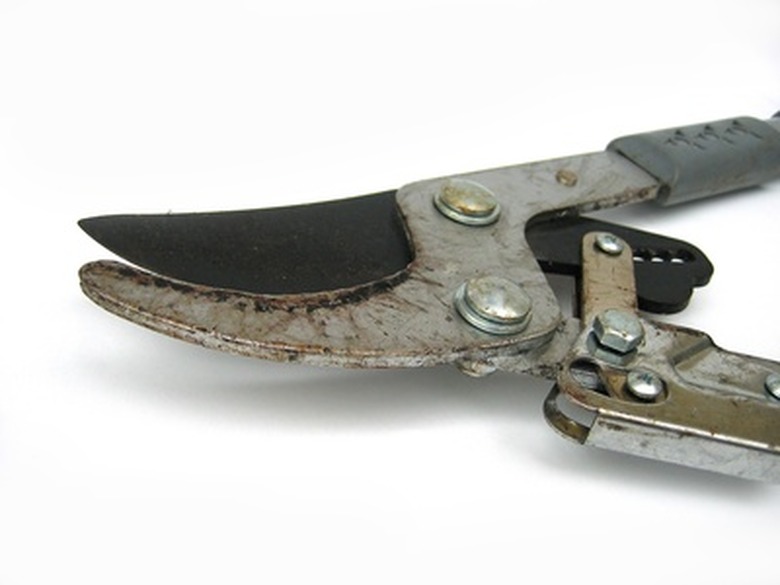How To Prune A Scotch Broom Shrub
Scotch broom, known botanically as Cytisus scoparius, is a flowering evergreen shrub with dark green, stiff and spreading foliage resembling broom threads. It has a mounding growth habit and reaches up to 10 feet in height at maturity. Scotch broom blooms from April through June with golden yellow flowers and produces black- or brown-hued seed fruits in the fall. According to Oregon State University, the seeds can remain viable in the soil for up to 60 years.
Step 1
Prune Scotch broom in the late summer or early fall following the bloom period in order to preserve the buds and bloom for the following season. This timing will also prevent seed formation and self-sowing.
Step 2
Prune away dead, dying, discolored, broken or diseased-looking branches and foliage from throughout the shrub. Place cuts down to the point of healthy wood or to the crown of the plant if needed. Pull the cuttings clear from the canopy and up from the soil, discarding them.
- Scotch broom, known botanically as Cytisus scoparius, is a flowering evergreen shrub with dark green, stiff and spreading foliage resembling broom threads.
- Prune Scotch broom in the late summer or early fall following the bloom period in order to preserve the buds and bloom for the following season.
Step 3
Reduce the size or shape the profile of the shrub by trimming the branch tips back to the desired length following the natural form of the shrub. Remove no more than one-third of the shrub mass at any one pruning session to prevent stress and shock from setting in.
Grow A Scotch Broom Shrub
In late spring and summer, Scotch broom (Cytisus scoparius) bursts into bloom with scores of fragrant, cheery yellow blooms. The plant does poorly in shallow, chalky soils, though it will do well in slightly acidic or neutral soil; it can grow in rocky or dry, sandy soil. Water newly planted shrubs weekly. The shrub will suffer in consistently wet soils. Expect the shrub to reach its final mature height in 10 to 20 years. Potted seedlings should be removed from the cold frame and planted directly in the garden when large enough to handle in either late summer or late spring. Scotch broom often self-sows freely in the garden, which may be a nuisance if multiple shrubs are not desired.
- Reduce the size or shape the profile of the shrub by trimming the branch tips back to the desired length following the natural form of the shrub.
- Potted seedlings should be removed from the cold frame and planted directly in the garden when large enough to handle in either late summer or late spring.
References
- Oregon State University: Scotch Broom
- Missouri Botanical Garden: Cytisus Scoparius
- Botanical: Broom
- Plants for a Future: Cytisus Scoparius
- California Invasive Plant Council: Cytisus Scoparius (Scotch Broom
- Royal Horticultural Society: Cytisus Scoparius
- University of California Integrated Pest Management Program: Gall and Blister Mites
- Invasive Plant Atlas of the United States: Scotch Broom
- Seattle Public Utilities: Watering to Establish Your New Plants
- Monrovia: Moonlight Scotch Broom
